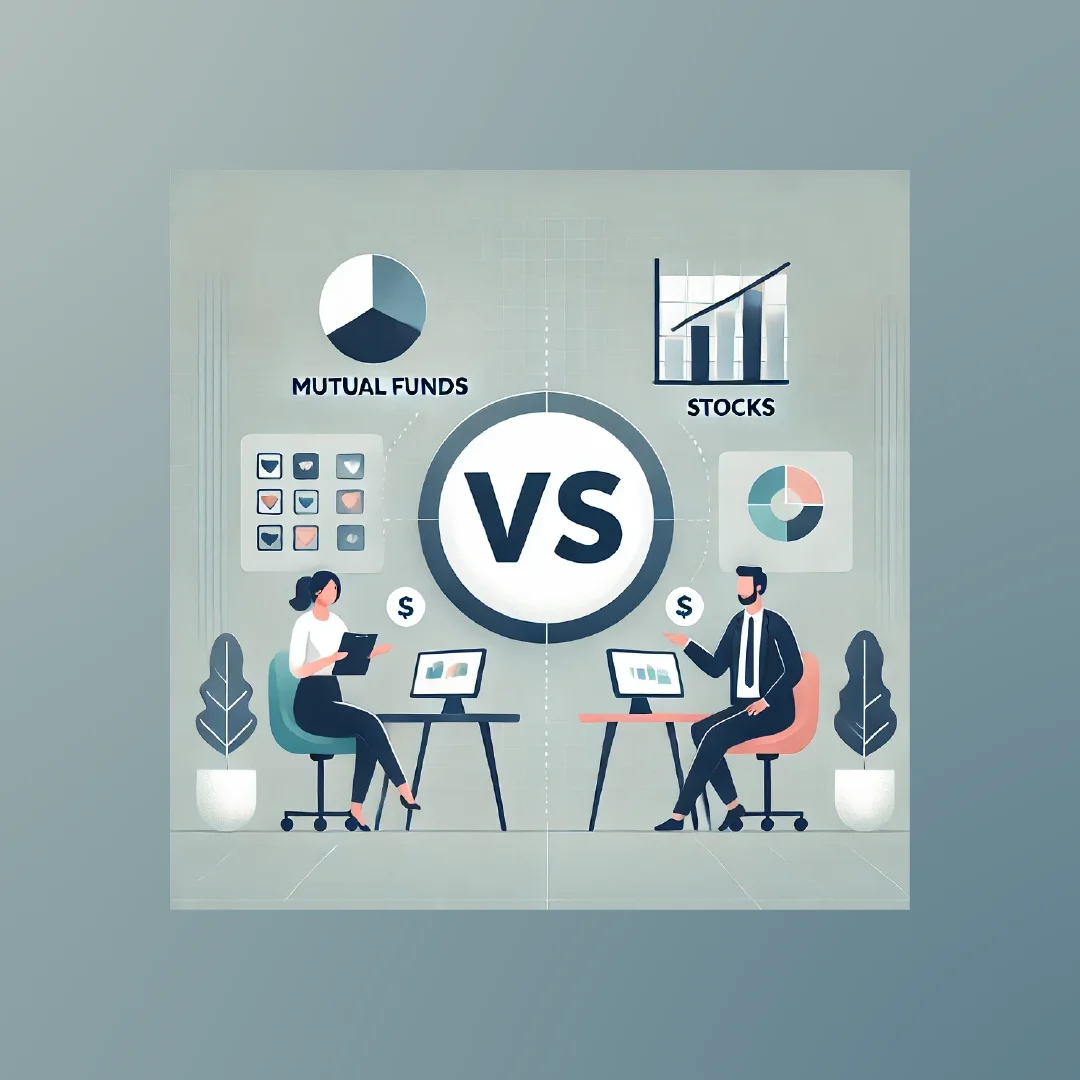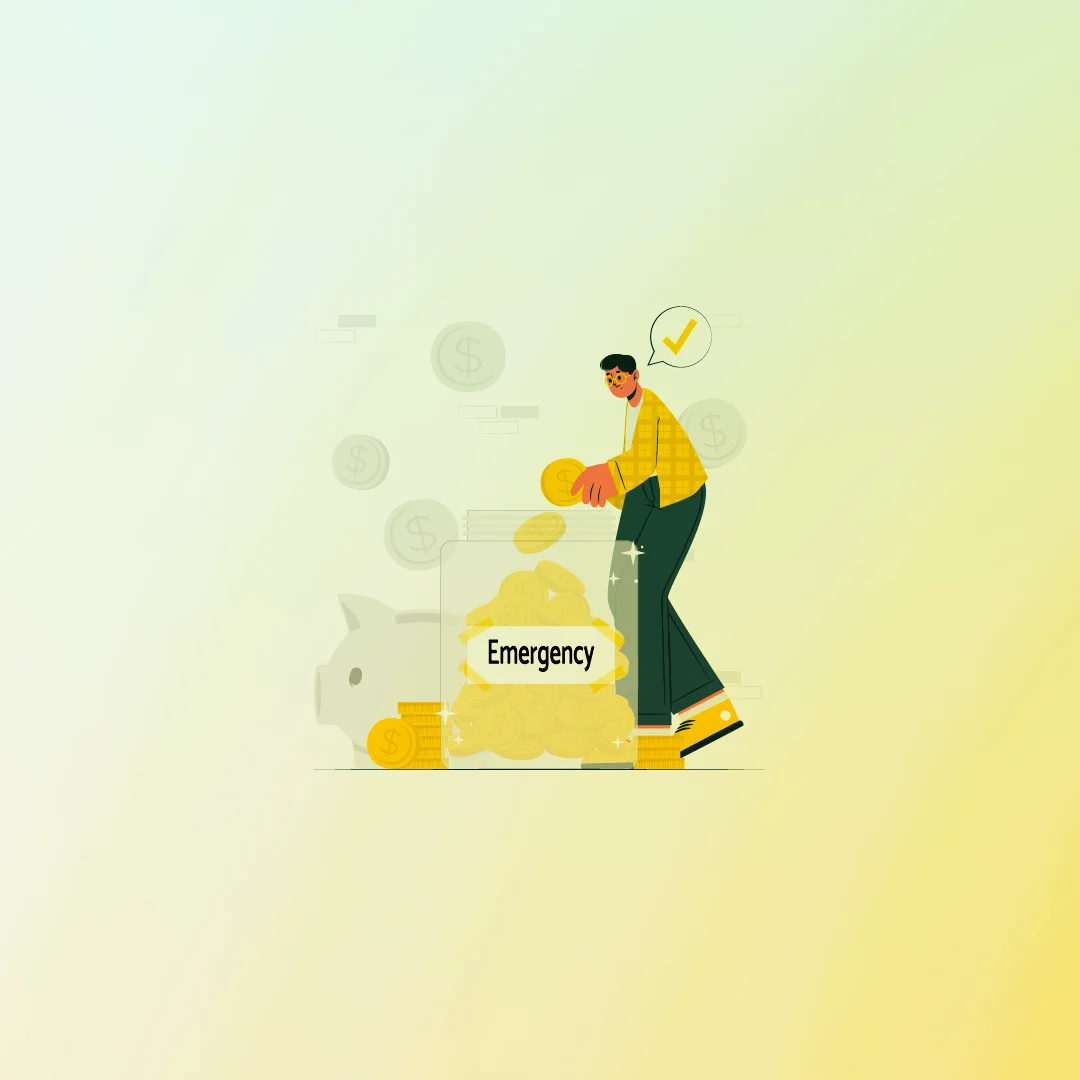
Life is full of surprises, and not all of them are pleasant. Unexpected expenses like unusual car repairs, sudden medical bills, or even a job loss can stress even the most careful financial plans. These situations demand more than just good intentions; they require ready cash, the “emergency fund,” which can help cushion the financial blows of such difficult situations.
We’ll help you understand what an emergency fund really is, how to build one quickly, and how best to use it to make sure you’re prepared no matter what comes your way.
What is an Emergency Fund?
An emergency fund is money set aside to cover unexpected expenses that could impact your financial health.
This fund acts as a financial safety net for costs that aren’t part of your regular budget, like emergency car repairs, urgent medical bills, or living expenses if you lose your job. The goal is to keep this money easily accessible and to have enough saved to cover several months of living expenses.
Why You Should Have an Emergency Fund?
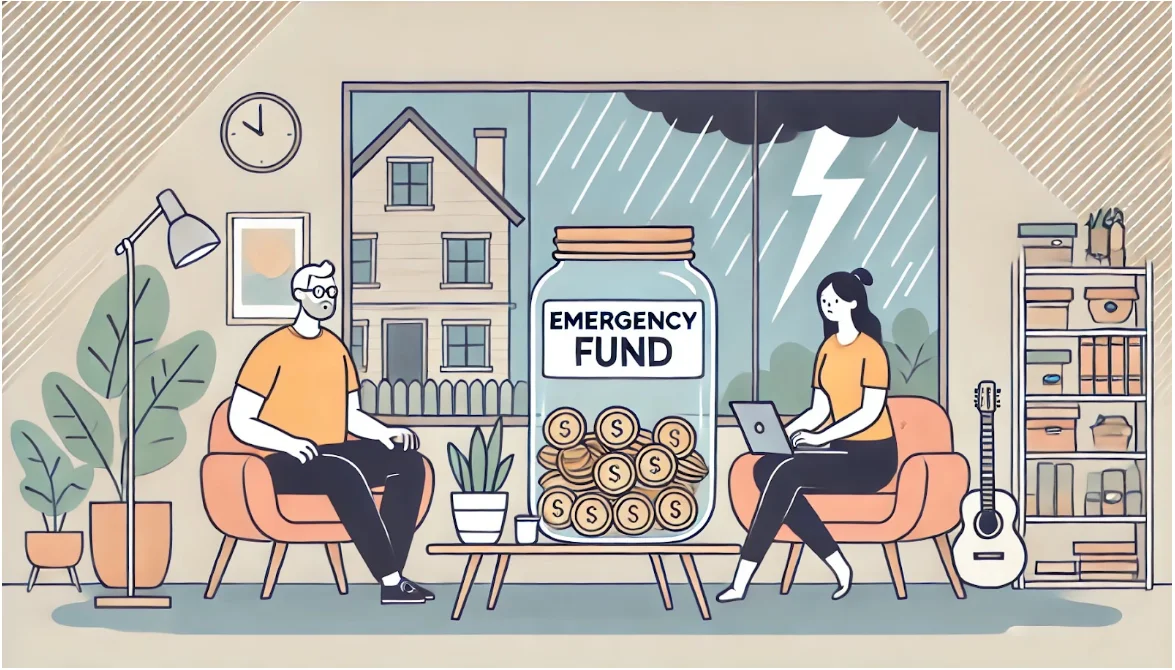
Inflation, rising costs, and economic uncertainty are making it increasingly difficult for many Americans to build and maintain sufficient emergency savings. Recent data from the Consumer Financial Protection Bureau (CFPB) highlights the critical need for emergency funds. The report says:
Nearly a quarter (24%) of consumers report having no savings set aside for emergencies.
39% have some emergency savings but less than a month's worth of income saved.
Only about 37% of consumers have at least one month of income saved for emergencies.
These statistics underscore the financial vulnerability many Americans face. Having an emergency fund is a crucial component of a sound financial plan. It provides a safety net that can help you manage unforeseen expenses without resorting to debt.
Here are the reasons why you should build an emergency fund :
1. Avoids High-Interest Debt
Without an emergency fund, you might resort to credit cards or high-interest loans to cover unexpected expenses. This can lead to a cycle of debt that's difficult to break. An emergency fund helps you avoid this financial trap.
2. Peace of Mind
Consumers with higher levels of emergency savings report better overall financial well-being. Knowing you have a financial cushion for emergencies can significantly reduce stress and anxiety. You'll have the confidence to handle unexpected challenges without compromising your financial well-being.
3. Protection Against Income Shocks
Losing your job or a reduction in income can be stressful and challenging to manage. An emergency fund can cover essential expenses during this period. you can maintain your standard of living while searching for new employment or adapting to changes in your financial situation.
4. Covering Unplanned Expenses
Research has found that families typically experience more than one significant expense spike per year. These Unexpected expenses can range from minor setbacks like car repairs or home appliance malfunctions to major life events such as job loss, medical emergencies, or natural disasters. The financial impact of these unforeseen circumstances can be substantial, potentially causing significant stress. An emergency fund provides a cushion to absorb these costs without derailing other financial goals.
5. Financial Independence
Building an emergency fund develops good saving habits, which can lead to improved overall financial health and give you the freedom to make life decisions without financial desperation. For example, you can leave a job you are not satisfied with without having the next one lined up, knowing that you have financial backing until you find the next opportunity.
9 Steps to Build an Emergency Fund Fast
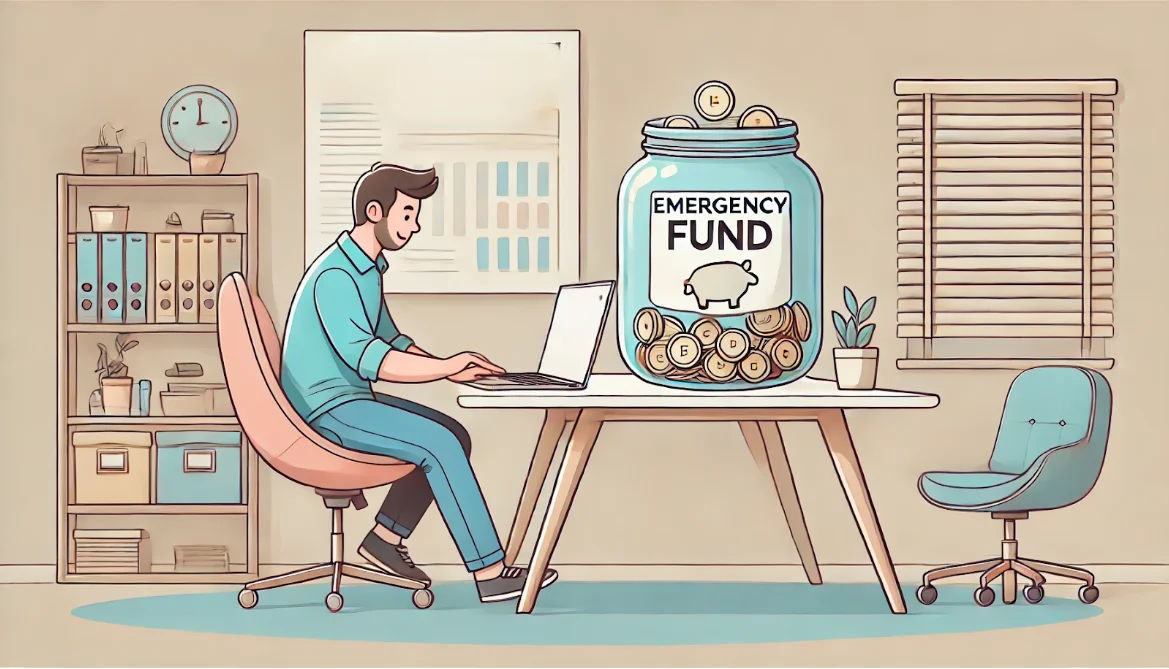
You know you need an emergency fund, but maybe you've been putting it off or aren't sure where to start. Don't worry, you're not alone. Building an emergency fund isn't always easy, but it's definitely worth it.
we'll break down exactly how to build your fund, no matter your current situation. Here are the steps to build a solid emergency fund. Let’s get started.
1. Calculate Your Monthly Expenses and Create a Budget
Building an emergency fund starts with getting a clear picture of your money situation. You need to see where every dollar is going before you can start saving effectively. This is about understanding your spending habits and finding ways to save.
Here's how to do it effectively:
List out all your monthly costs. Don't forget anything, including fixed costs like rent and utilities and variable expenses such as groceries and entertainment.
Go through your recent bank statements. The last 3-6 months should give you a good idea of where your money's been going.
Separate your needs from your wants. It's not always fun, but it's important to know what you can cut back on if needed.
Figure out your average monthly spending. It will tell you how much you typically need to cover your expenses.
See how your spending stacks up against your income. This comparison shows you how much room you have to save.
Create a budget that makes sense for you. Make sure to include a line for your emergency fund contributions.
Use a budgeting method based on your specific financial situation. For example, use the 50/30/20 Rule as a general guideline, allocate 50% of your income to needs, 30% to wants, and 20% to savings and debt repayment. Adjust these percentages based on your financial needs.
Use a budgeting app if it helps. Sometimes, having everything in one place makes it easier to keep track.
Your spending might change over time, so check in regularly and adjust as needed.
2. Set a Clear Savings Goal
Once you have a grasp of your expenses and a budget in place, the next step in building an emergency fund is setting a clear savings goal. It gives you a target to aim for and helps keep you motivated. Your goal should be specific, measurable, and tailored to your personal financial situation.
Here's how you can set a clear savings goal for your emergency fund:
Use the SMART approach, Make your goal Specific, Measurable, Achievable, Relevant, and Time-bound. This helps you create a goal you can actually work towards.
Aim to save enough to cover 3-6 months of your essential expenses. This provides a solid cushion for most emergencies.
Calculate your target amount, and multiply your monthly expenses by 3-6 to reach your goal. For example, if your monthly expenses are $3,000, your target could be $9,000 to $18,000.
If your income is irregular or your job is less secure, lean towards the higher end of the range.
Factor in your financial responsibilities, If you have dependents or a mortgage, you might want to save more.
Give yourself a realistic timeframe to reach your goal. This adds urgency and helps track progress.
Break down your goal into monthly or weekly savings targets. This makes the goal feel more achievable.
It is a good idea to create multiple emergency fund tiers. For example, a high-liquidity tier for immediate needs, a medium-term tier for potential job loss, and a long-term tier for unforeseen major expenses.
Remember, your emergency fund goal isn't set in stone. Life changes—such as a new job, an addition to the family, or moving to a more expensive area—will necessitate revisiting and possibly adjusting your savings target.
3. Start Small and Stay Consistent
Building an emergency fund doesn't have to be a sprint to a fixed amount. Many financial experts recommend beginning with a target of $1,000. This amount is enough to cover most minor emergencies, such as a car repair or an unexpected medical bill, and it’s a psychological boost once achieved.
Start with what you can afford. If you can only save $5 a week, that's fine. It's more important to start than to wait until you can save more.
Use the "pay yourself first" method. Treat your emergency fund contribution like a bill you have to pay each month.
Put aside a fixed amount regularly, even if it's just $20 a week. Consistency is key here.
Once you’ve hit your initial savings milestone, don't stop there. Gradually increase your target. After reaching the first $1,000, aim for one month of expenses, then two, and so on, until you reach your ultimate goal of three to six months' worth of expenses.
4. Cut Back on Unnecessary Expenses
Many people don't realize that small habits can make a big difference. Spending less and being more frugal can lead to surprising savings. This doesn't just mean cutting out luxuries; it involves reassessing your daily financial habits and finding creative ways to save without feeling deprived.
Start by looking at where your money goes each month. Dining out frequently, for example, can eat into your budget significantly.
Subscription services are another area where money often leaks unnoticed. Check for streaming services, gym memberships, or apps you're paying for but not using.
Shop smarter, use coupons, buy generic brands, and look for sales on items you regularly purchase.
Renegotiate bills, call your service providers (phone, internet, insurance), and ask about better rates or plans.
Avoid impulse purchases; try waiting 24 hours before purchasing items. This "cooling-off" period can help you decide if it's something you really need or just a fleeting want.
Use cash instead of cards for discretionary spending. It's a tangible way to see how much you're spending, and physically handing over cash can make you think twice about purchases.
5. Set Up a Dedicated Savings Account
To keep your emergency savings safe, choosing the right type of account is essential. A dedicated savings account, specifically a high-yield savings account or a money market account, is recommended due to several benefits they offer.
High-Yield Savings Accounts
High-yield savings accounts are particularly advantageous for emergency funds because they offer higher interest rates compared to traditional savings accounts. This means your money not only stays accessible but also grows faster due to the better returns.
Currently, thanks to the competitive interest rates influenced by recent federal policy changes, some high-yield savings accounts offer rates as high as 5.55% APY, significantly higher than the national average.
Money Market Accounts
Money market accounts are another excellent option for storing an emergency fund. Like high-yield savings accounts, they often offer higher interest rates and sometimes allow you to write checks or use a debit card directly linked to the account. This can be highly beneficial in an emergency when you need immediate access to your funds.
Tips to Maximize Emergency Fund Account Effectiveness
The ideal emergency fund account balances accessibility, growth potential, and security. Here are some ways to maximize the effectiveness of your emergency fund account:
Start by comparing different accounts. Online financial comparison sites provide up-to-date details on interest rates, fees, and requirements.
Make sure the account provides easy access to funds.
Check your chosen bank is FDIC-insured to protect your savings.
Link your emergency fund to your main checking account. This simplifies the process of transferring funds between accounts and can help automate the saving process.
Consider a laddered CD approach - Allocate portions of your fund into CDs with staggered maturity dates. This can yield higher returns while maintaining some liquidity. For example, divide your fund into 3-month, 6-month, and 12-month CDs.
Utilize a hybrid approach - Keep 1-2 months of expenses in a high-yield savings account for immediate access and the remainder in higher-yielding options like CDs or money market accounts.
Explore fintech options - Some fintech companies offer unique savings products with competitive rates and user-friendly interfaces. Research options like Ally, Marcus by Goldman Sachs, or Betterment.
Implement a two-account strategy - Use one account for your primary emergency fund and another for overflow. Once your main fund reaches your target, redirect additional savings to investments or other financial goals.
Consider inflation protection - Look into accounts or products that offer returns that keep pace with inflation.
6. Automate Your Savings
Automating your savings helps in building the fund effortlessly over time, reducing the temptation to spend the money elsewhere. This can be set up using online banking tools provided by most financial institutions.
You can automate your emergency fund savings by following these steps:
1. Set up split direct deposits - Ask your employer to divide your paycheck, sending a portion directly to your emergency fund account. This method ensures you save before you even see the money.
2. Scheduled Transfers - Set up a recurring transfer from your checking account to your savings account. Timing this transfer right after payday is effective, as it prioritizes your emergency fund contribution before other expenses.
3. Use round-up tools - Many banks offer features that round up your purchases to the nearest dollar and transfer the difference to savings. Over time, these small amounts add up significantly.
4. Set up cascading transfers - Create a system where excess funds in your checking account are automatically transferred to your emergency fund once they reach a certain threshold.
Many banking apps offer automated savings features. Look for automated rules that trigger transfers when specific conditions are met.
7. Increase Your Income
Cutting your expenses is important, but boosting your earnings can significantly shorten the time it takes to reach your savings goals. With the right strategies, you can potentially double or even triple your emergency fund contributions without feeling the pinch in your daily life.
Here are a few popular options:
Monetize your professional skills or hobbies to offer services such as writing, graphic design, or programming on platforms like Upwork or Fiverr.
Look for remote, part-time positions or contract work that can be done outside your regular job hours. Websites like Indeed, LinkedIn, FlexJobs, and Remote list remote work opportunities.
Engage in gig economy jobs through apps like Uber, Lyft, or DoorDash, which offer flexible schedules and allow you to earn extra money according to your availability.
If you feel your work deserves a raise, prepare a case and discuss it with your employer. Tools like PayScale can help you understand industry-standard salaries.
Upgrade your skills through online courses on platforms like Coursera or Udemy, which can lead to better-paying opportunities.
Sell unwanted items on platforms like eBay or Facebook Marketplace to raise cash for your fund.
8. Save Windfalls and Bonuses
If you receive unexpected income, such as tax refunds, work bonuses, or cash gifts, you can channel them into your emergency fund for maximum benefit.
Most people see these as a chance to spend, but smart savers know they're golden tickets to financial security. The best part? Since this money wasn't in your regular budget, saving it doesn't feel like you're giving anything up. It's like finding free money for your financial safety net.
9. Review and Maintain Your Emergency Fund
Just as your body needs regular check-ups, your emergency fund requires ongoing attention to stay healthy and effective. Life doesn't stand still, and neither should your financial safety net. Maintaining an emergency fund is an ongoing commitment that requires periodic adjustments to stay on track.
Maintaining an emergency fund is easy if you follow these tips:
Schedule Regular Check-ins
Set a reminder to review your emergency fund at least twice a year. During these reviews, assess if the fund still covers approximately three to six months of living expenses or more, depending on your current financial situation.
If your income or expenses have changed, adjust how much you contribute monthly. Increases in salary or decreases in expenses can allow you to boost your savings rate, while a job loss or increased living costs might require you to draw on the fund.
Resist Your Temptation
Clearly define what situations warrant dipping into your emergency fund. Typically, these would be significant unexpected expenses like major medical bills, necessary home repairs, or living costs during unemployment.
Be disciplined about not using these funds for non-emergencies. Remind yourself of the fund's purpose.
Replenish After Using the Fund
If you do need to use money from your emergency fund, prioritize replenishing it as soon as possible. Treat it like an urgent bill that needs paying - because it is.
Avoid Over-Saving
A solid emergency fund is important, but you also need to balance it with other goals, such as saving for retirement or paying off high-interest debt. You should allocate your money in such a way as to maximize your financial health overall.
If your emergency fund exceeds the amount you realistically need, consider investing the excess in higher-yield options or paying off debt to save on interest that you can use for other financial goals.
When and How to Use Your Emergency Fund
Your emergency fund is a financial safety net, not a piggy bank for impulse buys. In order to maintain your financial stability, you must know when to tap into your emergency fund. Before dipping into your emergency fund, take a moment to assess the situation. Is this a true emergency that can't wait?
A true emergency is an urgent, unexpected event that requires immediate financial attention and cannot be postponed or covered through normal cash flow. Here are common scenarios that qualify:
Job loss or significant income reduction
Unexpected medical or dental expenses
Critical home repairs (e.g., broken furnace, leaky roof)
Major car repairs essential for transportation
Unplanned essential travel (e.g., family emergency)
Sudden legal expenses
Emergency pet care
Natural disaster recovery
Identity theft resolution costs
Unexpected tax bills
If you decide to use the fund, take out only the amount you absolutely need. Accessing your emergency fund should be straightforward. This means keeping it in accounts where you can withdraw funds quickly without penalties. Whatever method you choose to withdraw funds, it should be quick and easy to use when you're in a pinch.
If you've used up part of your emergency fund, make sure you replenish it as soon as possible. Adjust your budget or increase your savings rate temporarily to accelerate replenishment.
Common Emergency Fund Challenges and Solutions
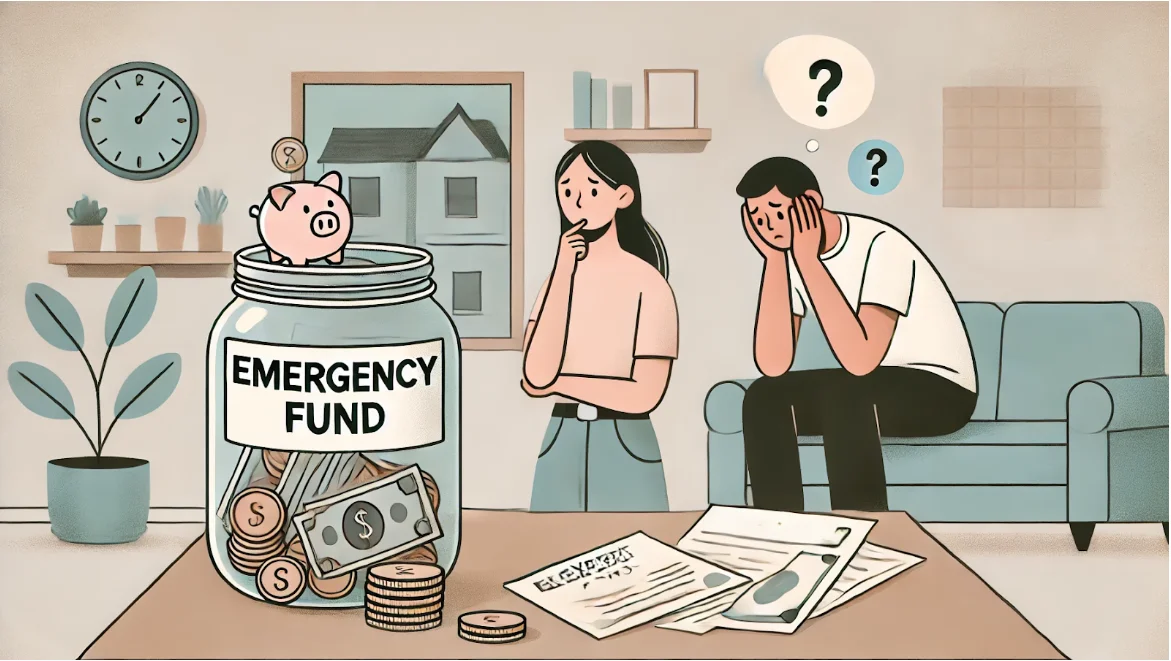
Creating and maintaining an emergency fund can pose several challenges. Here are a few common pitfalls and strategies to overcome them.
Starting Too Late
Many people delay starting their emergency fund until they face a financial crisis, which can amplify stress and financial strain.
Solution: Begin saving as early as possible, even if it's a small amount. Starting small can help build the habit of saving and emphasize its importance in your financial planning.
Inconsistent Contributions
Inconsistent saving can result in an emergency fund that grows too slowly or is insufficient when an actual emergency occurs.
Solution: Automate your savings. Set up automatic transfers from your checking account to your emergency fund right after each payday.
Misjudging What Qualifies as an Emergency
It can be tempting to dip into emergency funds for non-emergency items or situations that could be resolved without accessing these savings.
Solution: Clearly define what constitutes an emergency and stick to it. Avoid using these funds for regular expenses or impulse purchases.
Low Interest on Savings
The interest rates on typical savings accounts might not keep up with inflation, potentially diminishing the purchasing power of your saved funds over time.
Solution: Get a high-yield savings account that offers better interest rates to enable your money to grow more effectively. Regularly review your banking arrangements to make sure you're getting the best rate.
Reaching the Goal and Stopping
Some might stop saving once they reach their initial emergency fund goal, not considering changes in their financial situation or inflation.
Solution: Regularly review and adjust your emergency fund goal. As your living expenses increase or your family grows, so should your fund. This keeps your savings relevant and adequate for your current situation.
Overdrawing the Fund
Once established, there might be a temptation to use the emergency fund for impulsive or unnecessary expenses, depleting the fund prematurely.
Solution: Maintain strict discipline about the use of these funds and continually remind yourself of the fund's purpose. If you find yourself frequently tempted to dip into your emergency savings, consider placing them in a slightly less accessible account.
Balancing Multiple Financial Goals
Saving for an emergency fund can sometimes conflict with other financial goals, like paying off debt or saving for retirement.
Solution: Prioritize your financial goals based on urgency and importance. Use budgeting tools to allocate funds proportionally to different goals without neglecting your emergency fund.
Bottom Line
An emergency fund helps you pay for unexpected costs without needing to borrow money. To build one, start saving a little at a time, cut down on extra spending, and keep your money in a place where it can grow but you can still get to it easily. This helps you stay ready for surprises and feel secure with your money.
Don't miss out on more useful tips—subscribe to our updates for more ways to manage your money wisely!
FAQs
How much money should be an emergency fund?
Financial experts generally recommend saving 3-6 months' worth of living expenses in an emergency fund. However, the exact amount can vary based on your individual circumstances, job stability, and financial obligations.
What is the 50/30/20 rule?
The 50/30/20 rule is a budgeting guideline that suggests allocating your after-tax income as follows:
50% for needs (essential expenses like housing, food, utilities)
30% for wants (non-essential spending like entertainment, dining out)
20% for savings and debt repayment (including building your emergency fund)
Is a 3-month emergency fund enough?
If you're just beginning to save, a three-month emergency fund can be a good place to start. Having an emergency fund of at least six months is often recommended, particularly if your income is unstable or your financial responsibilities are significant. It serves as a basic safety net in case of short-term financial disruptions.
Is a 1-year emergency fund too much?
For most people, a 1-year emergency fund may be more than necessary. While it gives a sense of security, it could mean missing out on potential returns from investing that money. Consider your personal circumstances when deciding if a 1-year fund is right for you.
A larger fund might be appropriate for those with irregular incomes, like freelancers or self-employed individuals, or those in volatile industries.
How do I start an emergency fund with no money?
Starting an emergency fund with no money is challenging but possible. Here are some steps to get started:
Cut non-essential expenses and redirect that money to savings
Sell unused items around your home
Look for ways to earn extra income through side gigs or part-time work
Use windfalls like tax refunds or gifts to jumpstart your fund
Should I use my emergency fund to pay off debt?
Generally, it's not recommended to use your emergency fund to pay off debt. Your emergency fund is meant to cover unexpected expenses and provide financial security. Using it to pay off debt could leave you vulnerable if an emergency arises. Instead, focus on building your emergency fund while making minimum debt payments. Once you have a solid emergency fund, you can put extra money towards debt repayment.

